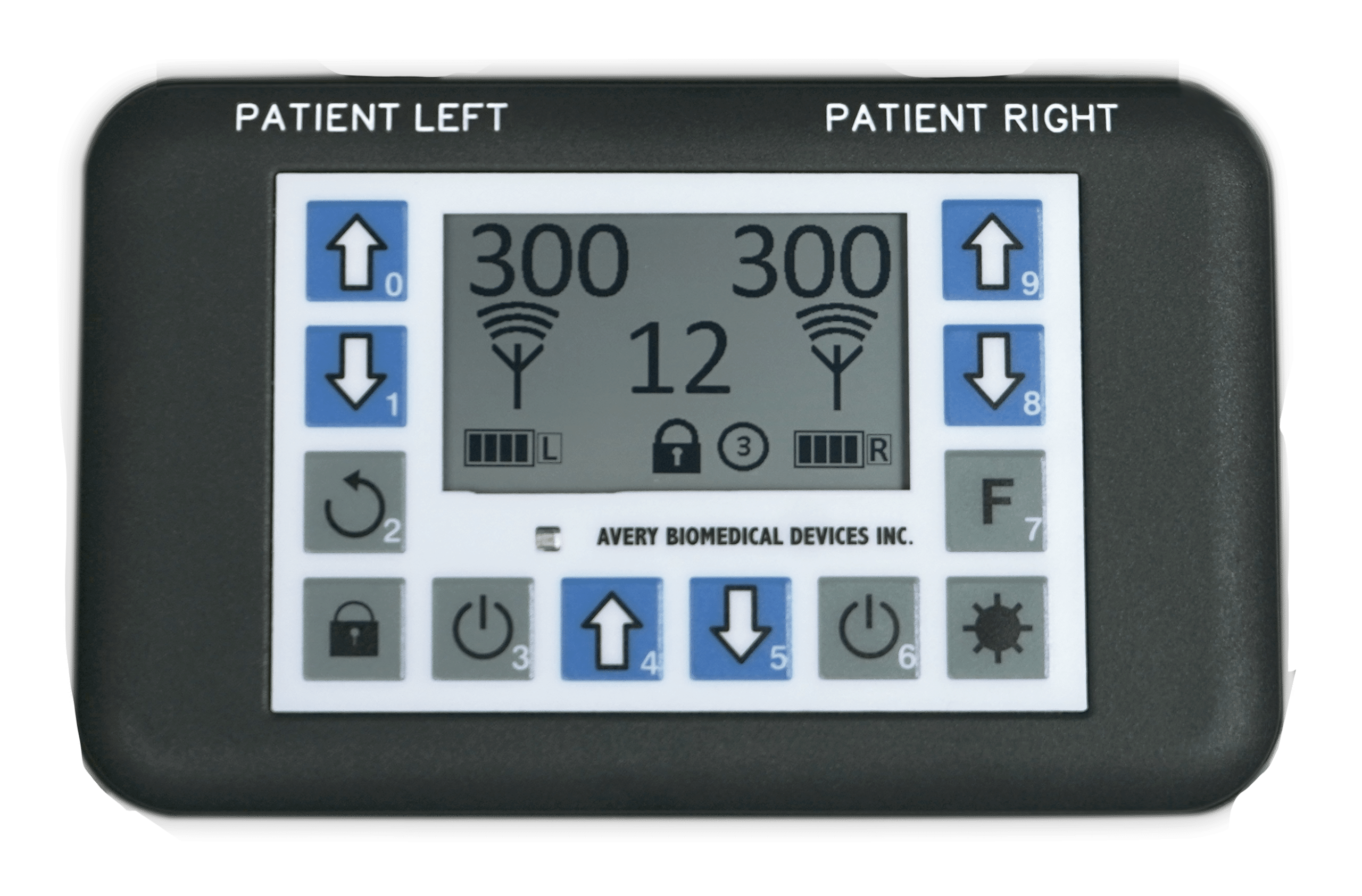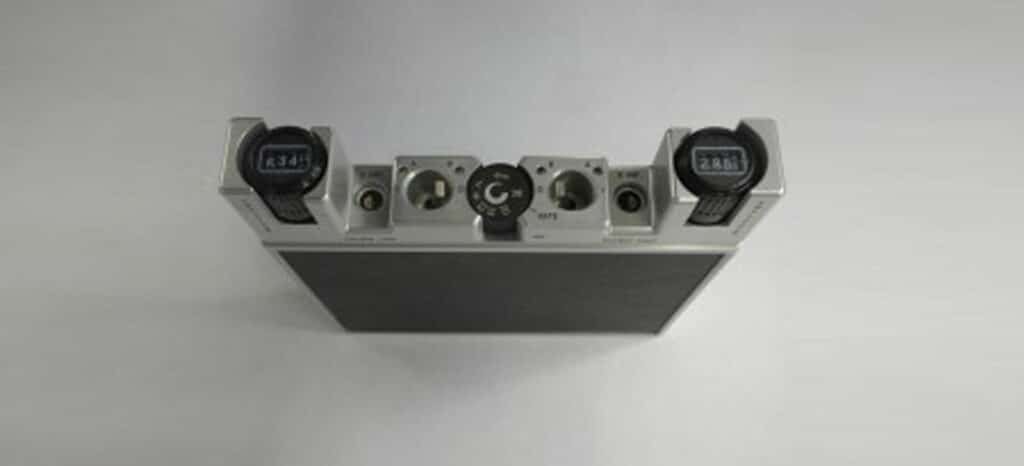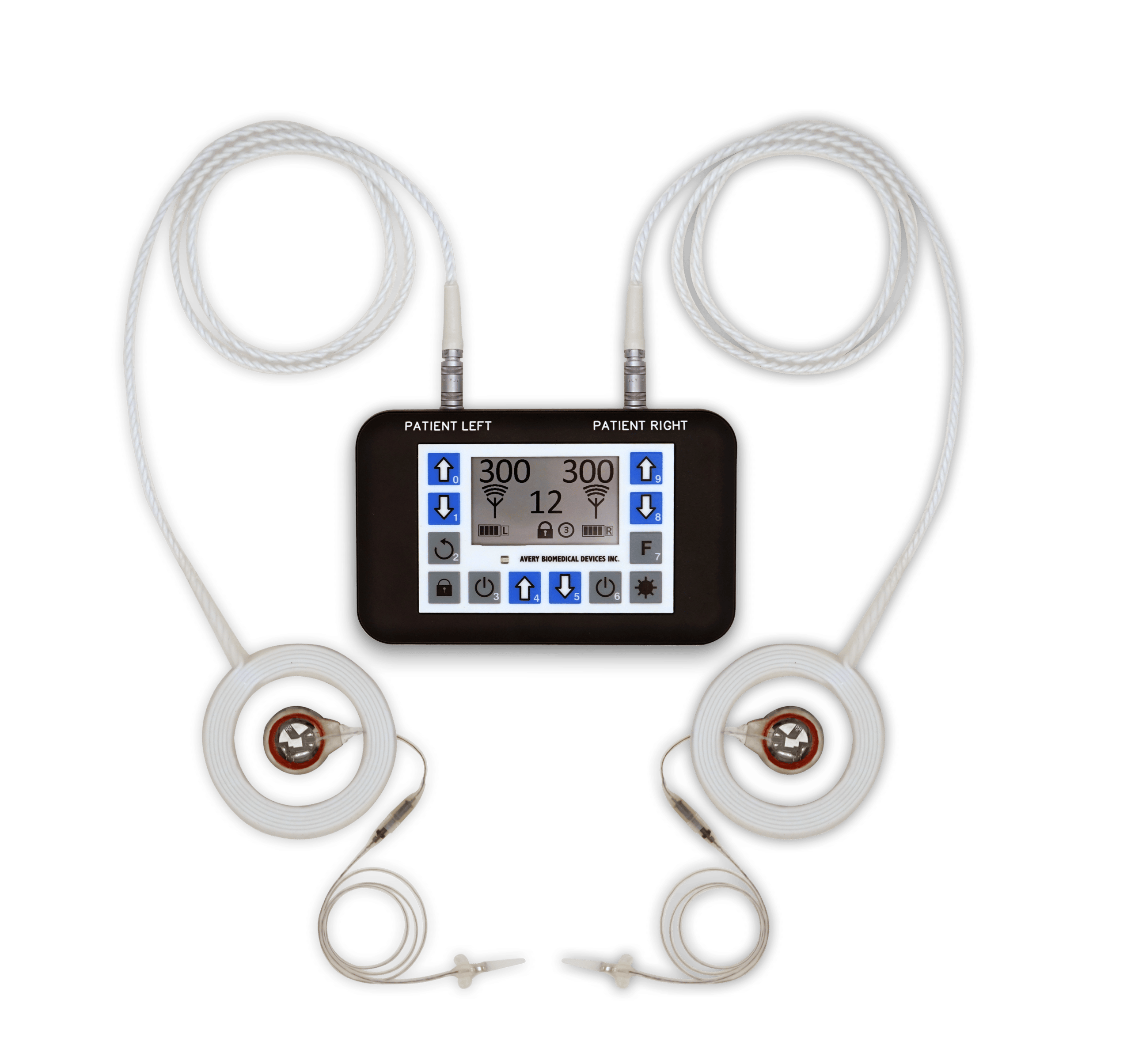



Antennas are used to transfer radiofrequency (RF) energy from the external transmitter through the skin to the implanted receivers and electrodes. The system will not work unless the antennas are affixed to the patient’s skin, directly over the implanted receivers.
Antennas are a durable disposable item. They are warranted for a period of 90 days from the date of shipment, but proper care and gentle handling will make them last longer. It is recommended that antennas be replaced every six months.
It is recommended that patients always have a spare pair of antennas available.

Antennas can be held in place using hypoallergenic adhesive tape. A suggested method for taping is shown in our photo. It is recommended that tape location be changed frequently to avoid skin irritation.
A thin layer of polypropylene or similar material may help alleviate skin irritation due to perspiration when placed directly beneath the antenna. Amplitude settings may need to be adjusted accordingly to maintain adequate ventilation.
Alternatively, other adhesives as elastic netting that conforms to body shape, abdominal binders, elastic bandages, or gas permeable dressings such as Tegaderm® can be used.
Antennas are reimbursable as durable medical equipment. Depending on your policy, prior authorization may be required. If a HCPCS code is requested, please use code E1399.
To order replacement antennas, please call us directly during normal business hours and select option ’3′ when prompted.
The Customer Service Department is happy to assist with troubleshooting and provide technical information regarding diaphragm pacing. Our hours are 8:00 am to 4:00 pm (EST) weekdays.
Technicians are available by telephone to assist with troubleshooting and technical support during normal business hours (8 AM to 4 PM Eastern Time, Monday through Friday).
Refer to the Instruction Manual provided with each system for complete instructions on the operation and troubleshooting of the Avery Diaphragm Pacing System.
* Antenna indicators may not flash at very low stimulus amplitudes even though the transmitter and antenna may be functioning properly.

Our normal operating hours are from 8 AM to 4 PM Eastern Time (GMT-5)
Monday through Friday.
© 2012 – 2023 Avery Biomedical Devices, Inc. All Rights Reserved